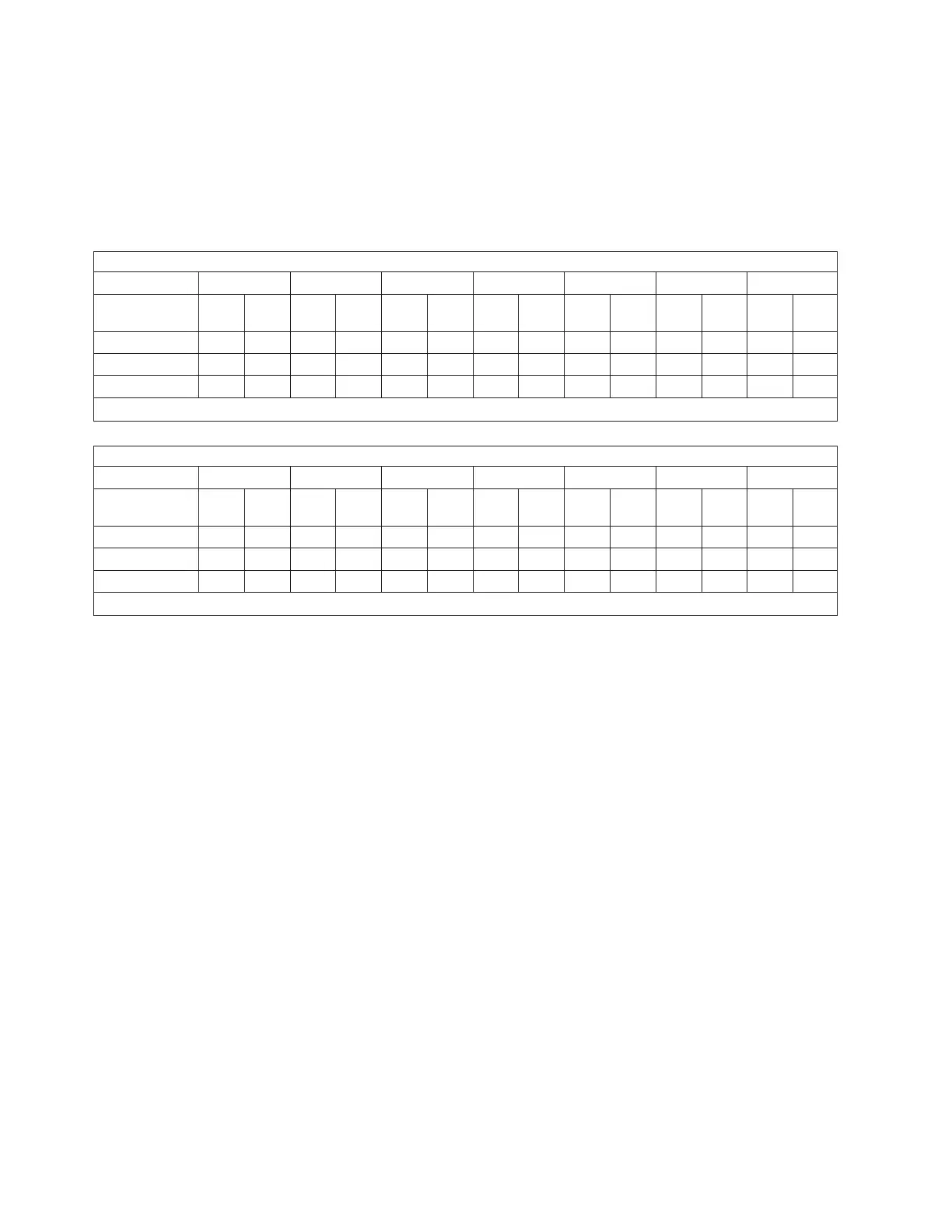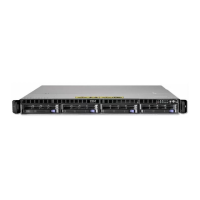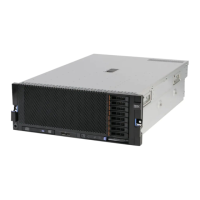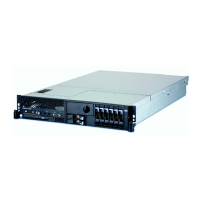v Machine load is listed in total ac input power (power for both line cords combined)
v A fresh battery is defined as 2.5 years old or less.
v An aged battery is defined as 6.5 years.
Note: Battery capacity decreases gradually as the battery ages (from fresh-battery value to aged-battery
value). The system diagnoses a failed-battery condition if the capacity decreases below the
aged-battery value.
Typical Machine-Holdup Time vs. Load for Fresh Battery
Machine Load 3 kW 6 kW 9 kW 12 kW 15 kW 18 kW 19.5 kW
IBF
Configuration
N R N R N R N R N R N R N R
1 BPR 7.0 21.0 2.1 7.0
2 BPR 21.0 50.0 7.0 21.0 4.0 11.0 2.1 7.0
3 BPR 32.0 68.0 12.0 32.0 7.0 21.0 4.9 12.0 3.2 9.5 2.1 7.0 1.7 6.5
N=Non-redundant, R=Redundant
Typical Machine-Holdup Time vs. Load for Aged Battery
Machine Load 3 kW 6 kW 9 kW 12 kW 15 kW 18 kW 19.5 kW
IBF
Configuration
N R N R N R N R N R N R N R
1 BPR 4.2 12.6 1.3 4.2
2 BPR 12.6 30.0 4.2 12.6 2.4 6.6 1.3 4.2
3 BPR 19.2 41.0 7.2 19.2 4.2 12.6 2.9 7.2 1.9 5.7 1.3 4.2 1.0 3.9
N=Non-redundant, R=Redundant
Guide for Raised-Floor Preparation
Although a raised floor is not required for the Eserver pSeries 655, it is recommended for optimum
system cooling and cable management. Raised floor cutouts should be protected by electrically
nonconductive molding, appropriately sized, with edges treated to prevent cable damage and to prevent
casters from rolling into the floor cutouts.
Front-service access is necessary on the Eserver pSeries 655 to accommodate a lift tool for the
servicing of large drawers (the processor nodes and I/O drawers). Front and rear service access is
104 Site and Hardware Planning Information

